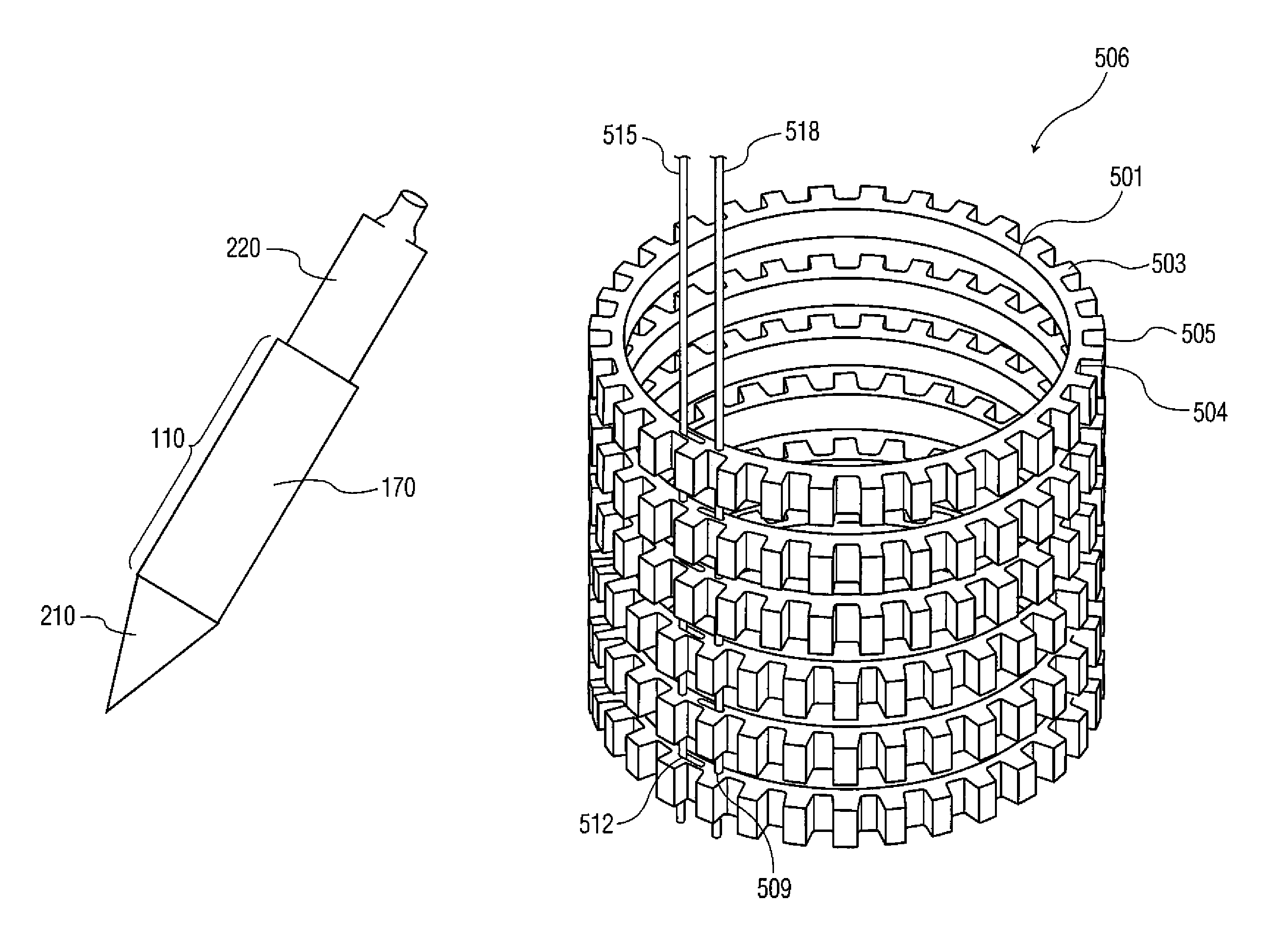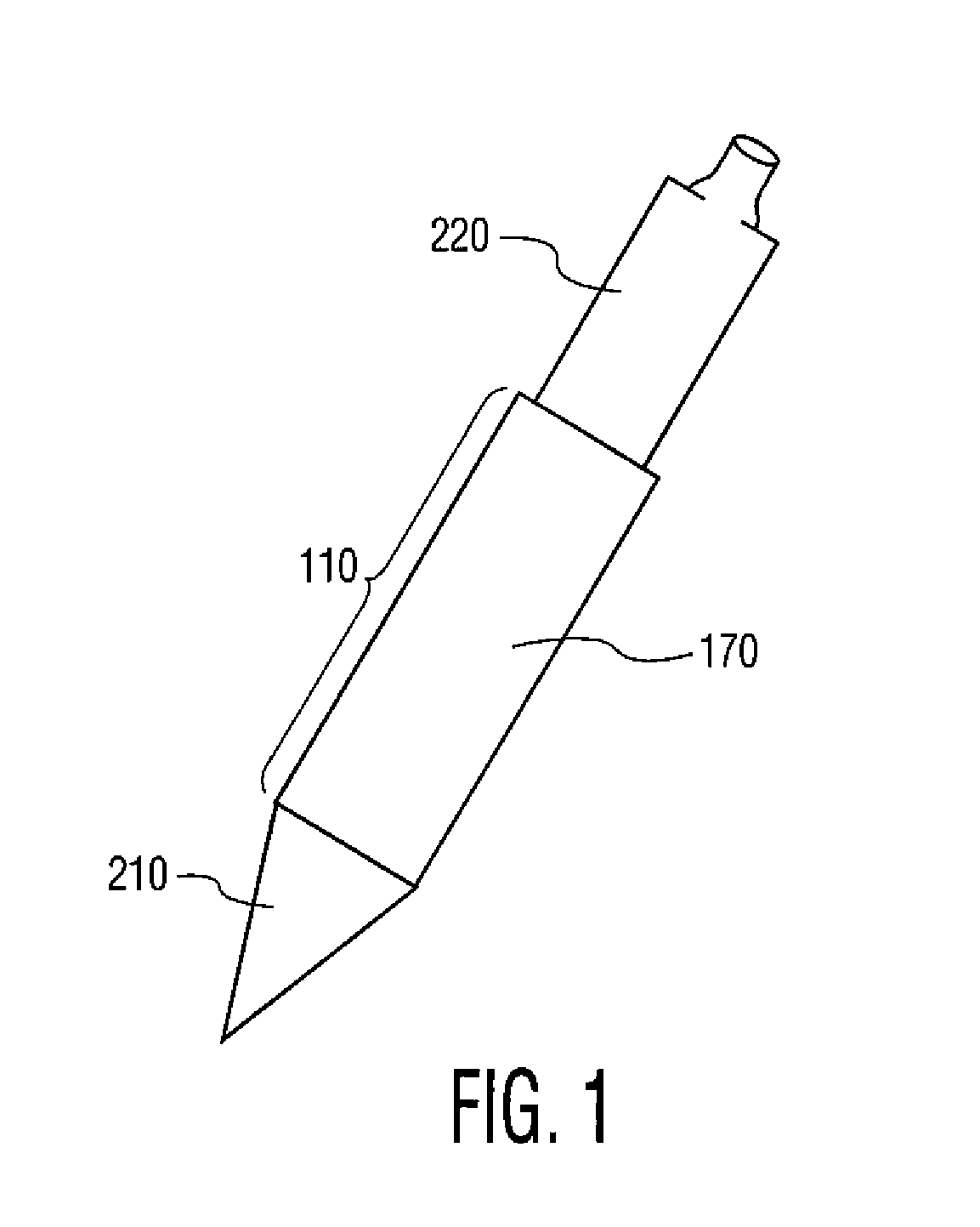Adaptive fragmentation mechanism to enhance lethality
a fragmentation mechanism and lethality technology, applied in the direction of weapons, ammunition projectiles, projectiles, etc., can solve the problems of fragmentation warheads designed to defeat personnel that are not generally effective against material targets, create logistics and supply burdens, and reduce the effect of fragmentation warheads
- Summary
- Abstract
- Description
- Claims
- Application Information
AI Technical Summary
Benefits of technology
Problems solved by technology
Method used
Image
Examples
Embodiment Construction
[0013]FIG. 1 illustrates a typical projectile meant to deploy a cylindrical shaped fragmenting outer warhead according to this invention. The fragmenting outer warhead 170 is disposed in an area bracketed as 110 on the projectile. The projectile typically has a nose cone area 210 also including guidance, and a propulsion area 220 including a propulsion means. The fragmenting outer warhead typically sprays fragments radially outward however as shown in FIG. 7, there is also a forward outwardly conically shaped fragment spray into the direction of the target, moreover hopefully the projectile will have well closed in even began to enter the target before the fragmenting outer warhead begins to explode. FIGS. 2 and 2A show a cross section of the overall fragmenting warhead mechanism. The outer part of the warhead mechanism is cylindrically shaped fragmenting outer warhead 170. At the core, there is a solid explosive charge 160, cylindrically shaped, and typically coaxial to the fragmen...
PUM
 Login to View More
Login to View More Abstract
Description
Claims
Application Information
 Login to View More
Login to View More - R&D
- Intellectual Property
- Life Sciences
- Materials
- Tech Scout
- Unparalleled Data Quality
- Higher Quality Content
- 60% Fewer Hallucinations
Browse by: Latest US Patents, China's latest patents, Technical Efficacy Thesaurus, Application Domain, Technology Topic, Popular Technical Reports.
© 2025 PatSnap. All rights reserved.Legal|Privacy policy|Modern Slavery Act Transparency Statement|Sitemap|About US| Contact US: help@patsnap.com



